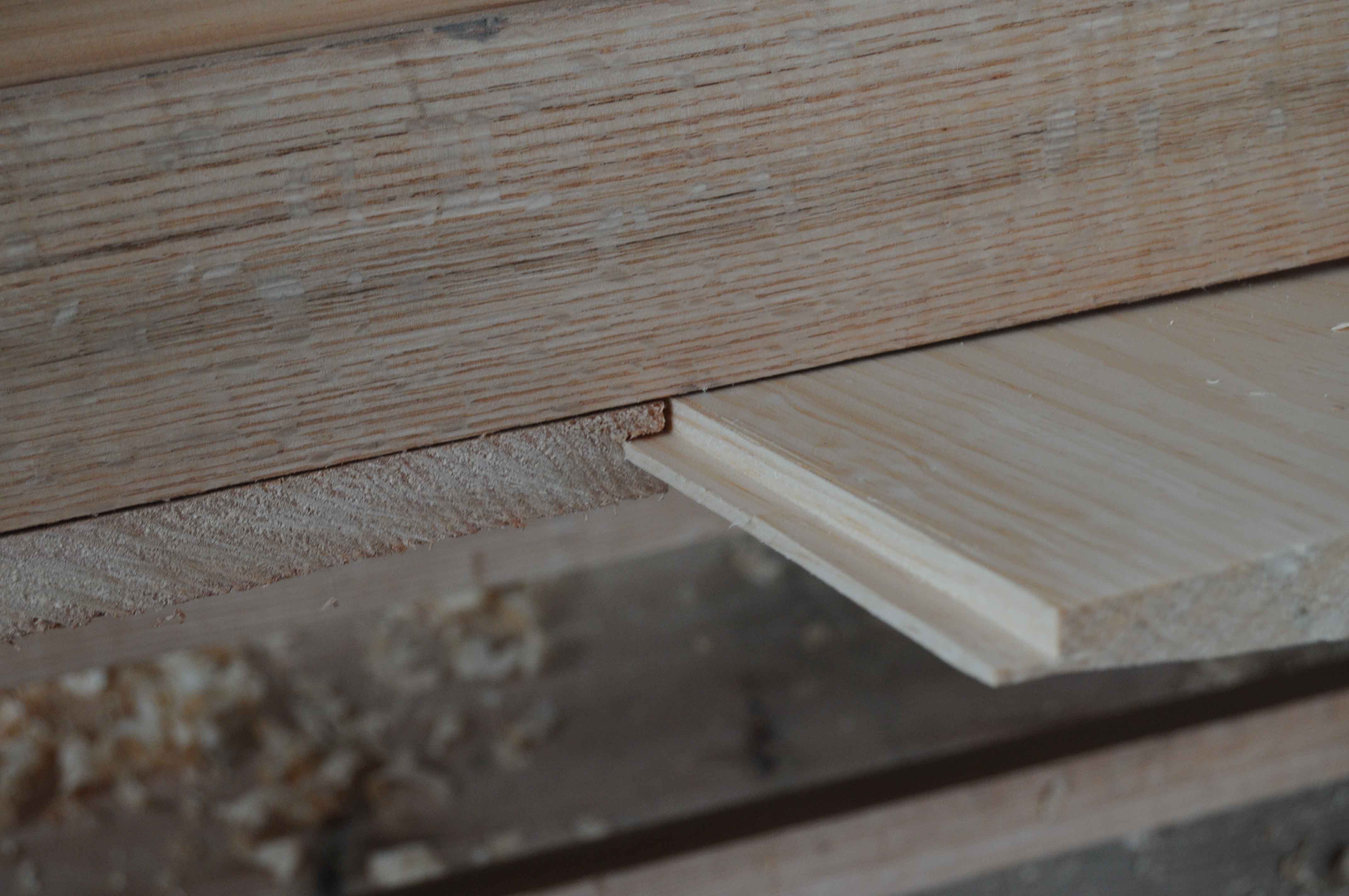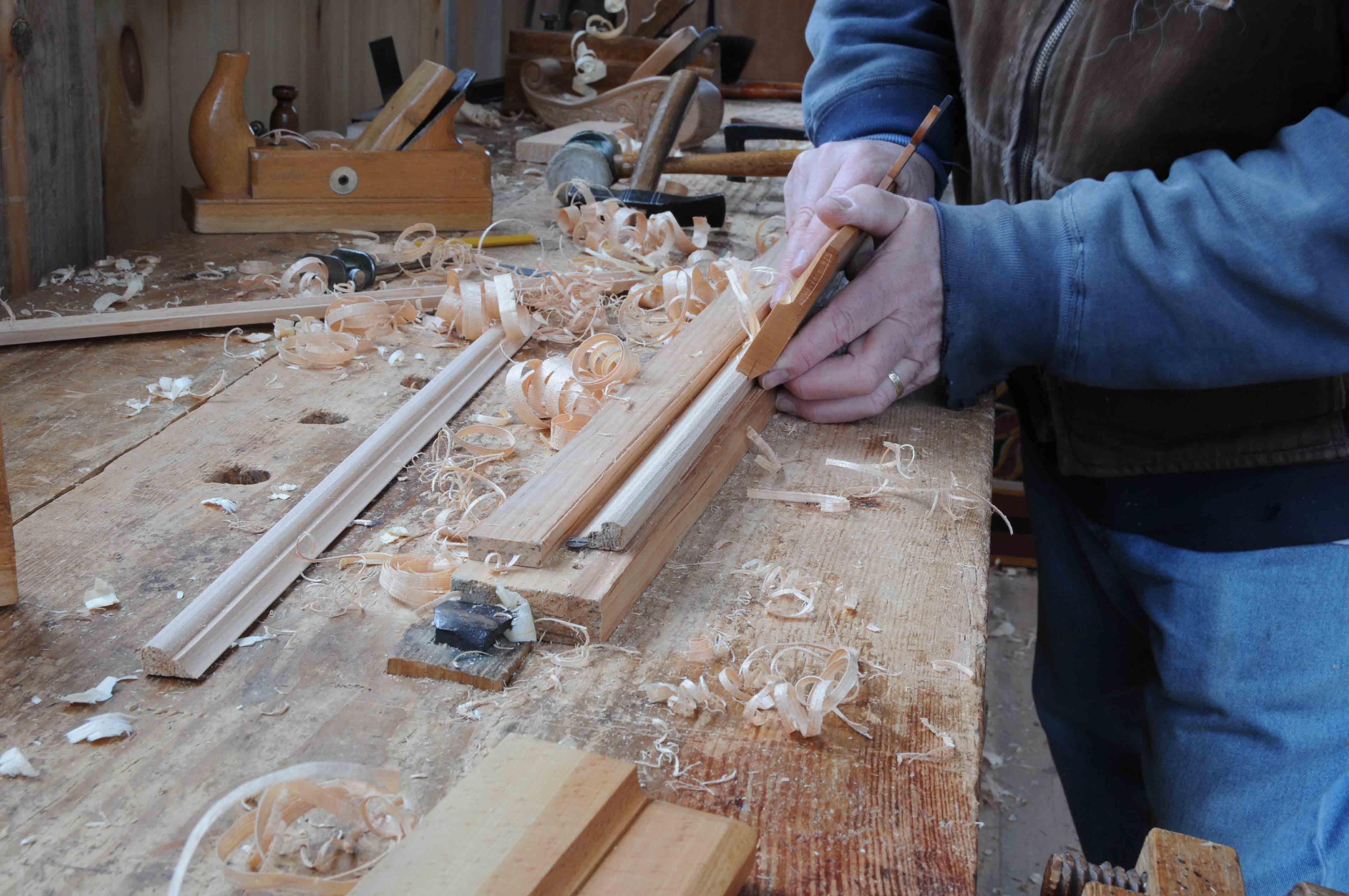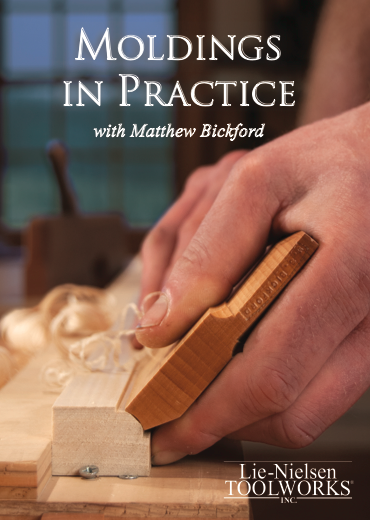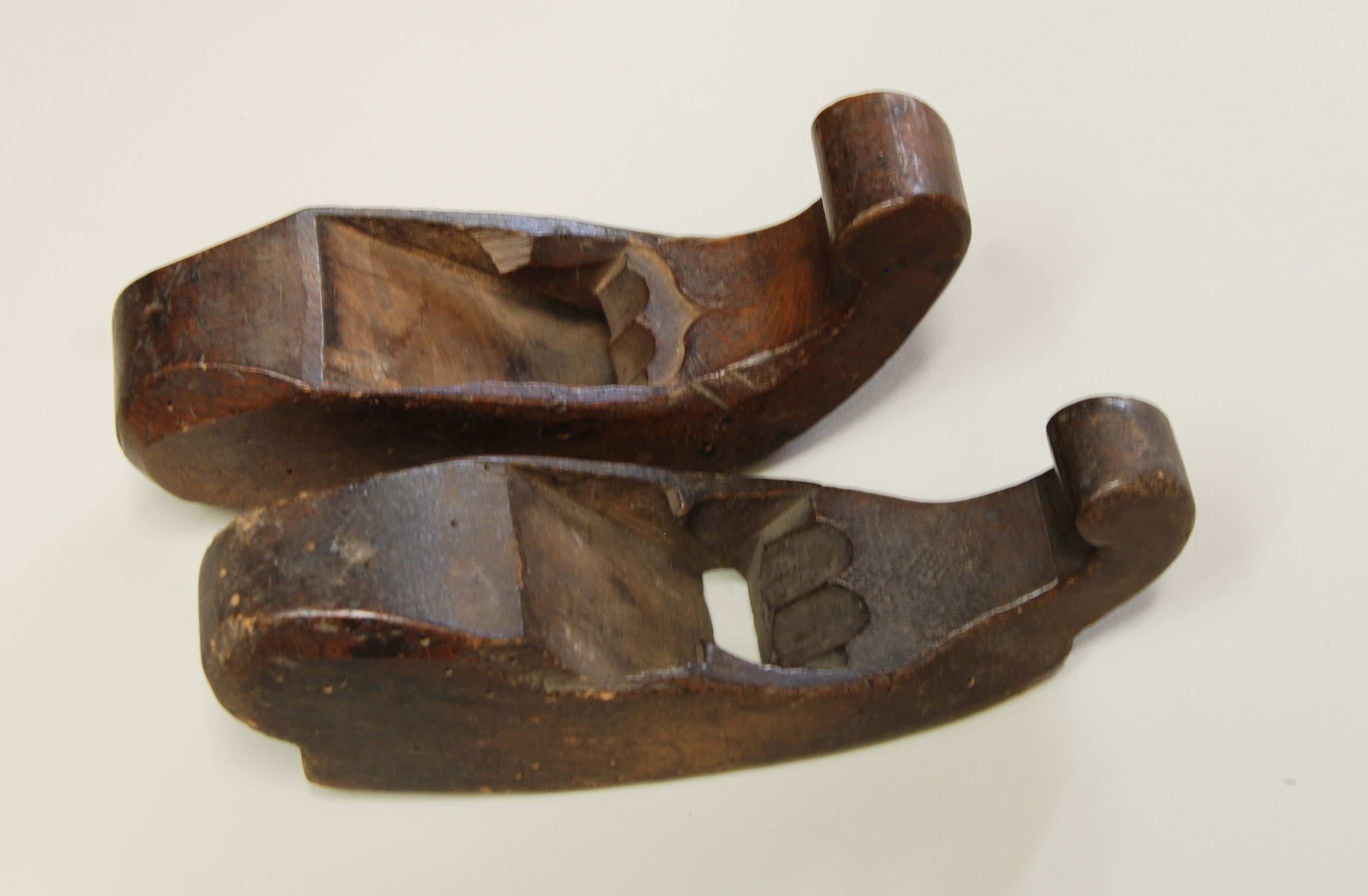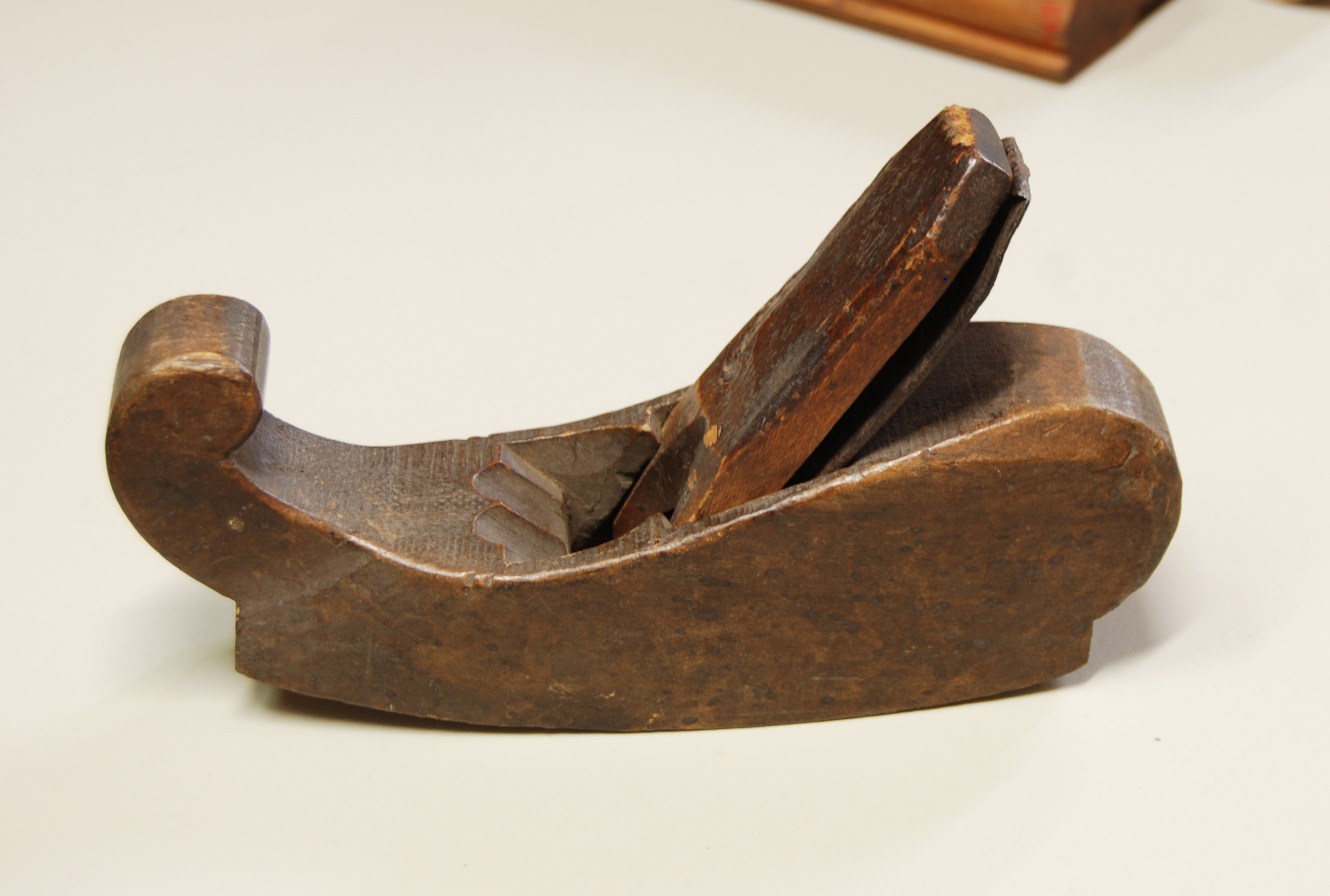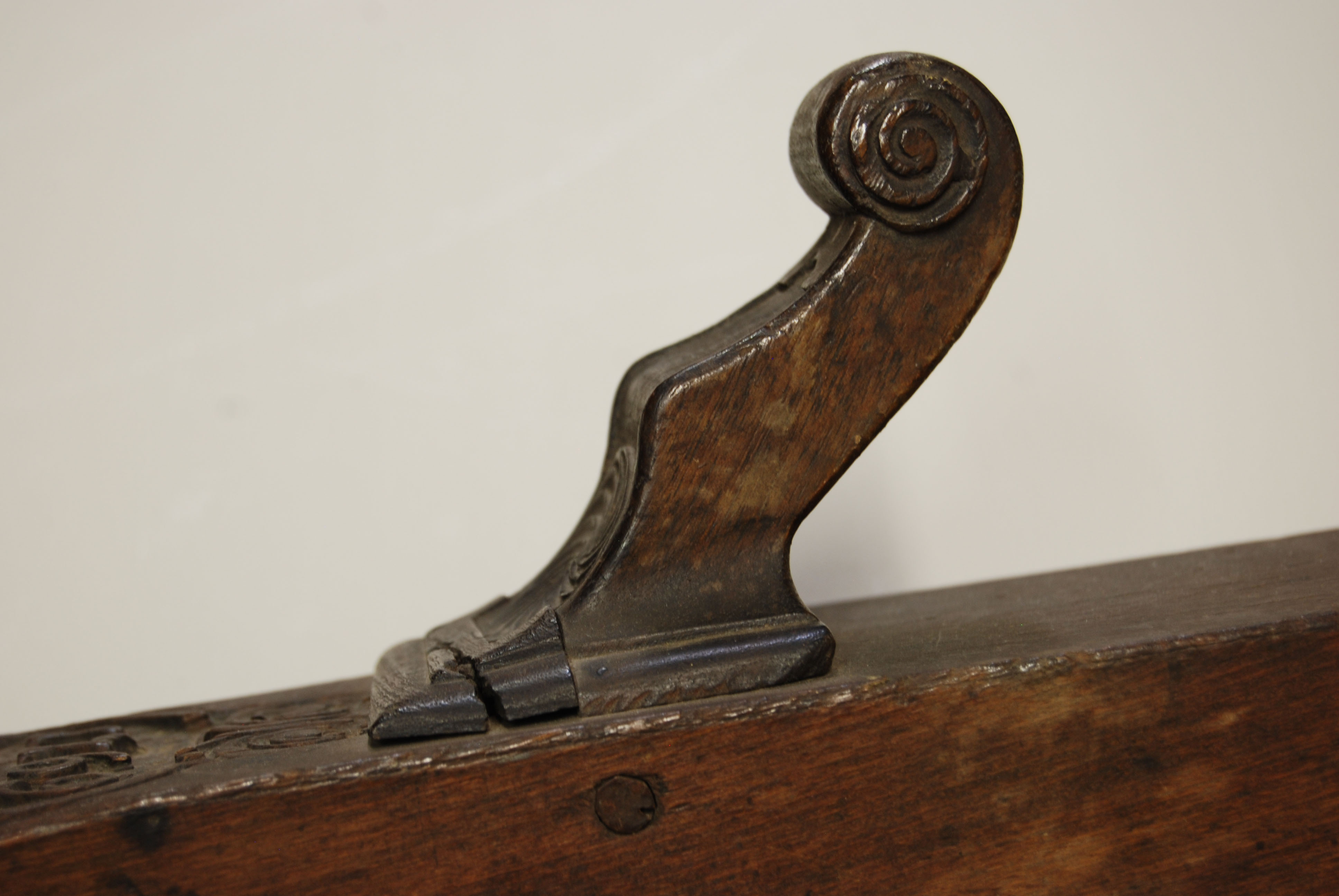I got a new log last week, and have started in on planing it. Daniel & I are finishing up a video about splitting and planing, but there’s lots of that to be done – so here’s a short post about the planes I’m using this week. When I have a lot of pieces to plane, I usually keep several planes going at once. In this case, 5 of them.
From the top left to bottom right – an American jointer 28 7/8″ long, a German jointer, 223 1/2″ long. Then another American plane, just a bit shorter, 22″, and an Ulmia (German) smooth plane 9 1/2″ long and a Dutch-style plane ground as a scrub plane. Its body is only 6″ long. Why so many? I tend to set a couple to different depths-of-cut, so that I switch planes rather than adjust irons when I want either a heavier or lighter cut. Depending.
I dragged this German plane out of the tool chest recently, and have been using it as the primary plane the last few days. I got it years ago from Josh Clark, I bought it because it’s oak. It feels pretty heavy, I weighed it today – it’s 7 lbs 9 oz. The American jointer behind it is more than 5″ longer and weighs just about the same.
Working 4-foot long rails, I was finding this plane easier to get full-length shavings. At first I thought it was about the weight, but I then looked at the placement of the iron in the body.
The American one on top is 22″ long, its cutting edge is 7″ from the end. The German one at 23 1/2″ long has its edge 9 7/8″ from the end. Finally, the large jointer is 28 7/8″ and its iron is 9 1/8″ from the front end. So the German one has more mass ahead of its iron than the other two. Maybe that accounts for the different feel. The angles the irons bed at are pretty similar. I didn’t measure those…
Here’s the maker’s mark from Holst.
The internet search I just did wanted to take me to Gustav Holst’s “The Planets” instead of Holst planes. I found one hit, what’s listed as a hornbeam plane – https://www.holzwerken.de/museum/profilhobel/treppenhobel3.phtml One of those views seems to show pronounced medullary rays – similar to the plane I have. I looked up European hornbeam in the wood database – that entry doesn’t mention ray fleck figure – it does discuss the end grain – but I can’t see anything on the end grain of this plane. So I keep thinking it’s oak, the medullary rays look like white oak to me – but maybe it is hornbeam – which is what someone told me 9 years ago – I’m a slow learner. https://pfollansbee.wordpress.com/2012/10/24/im-an-oak-man/

Here’s Josh’s site, if you’ve not seen it before https://www.hyperkitten.com/








